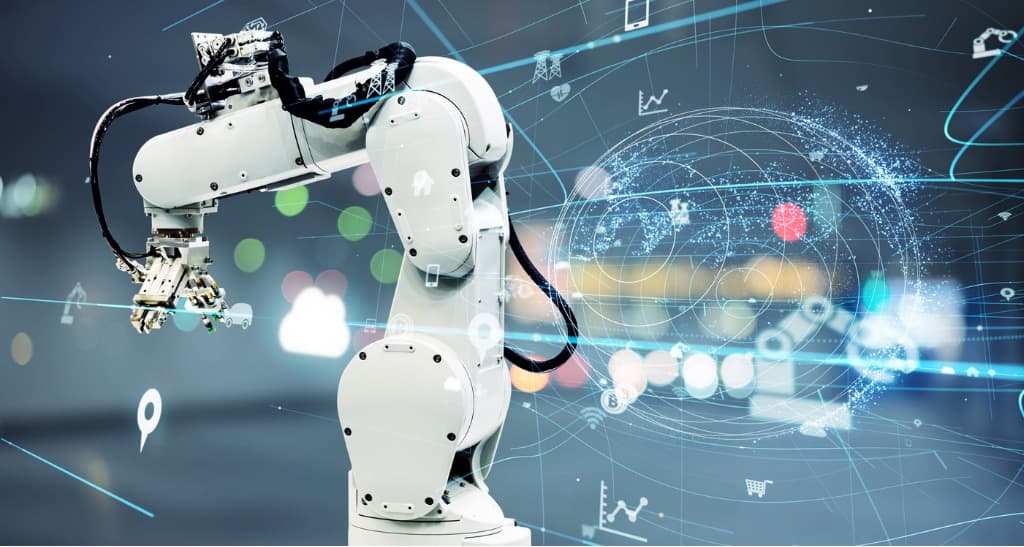For machine learning to succeed, an IT system must first be trained by a human with a specific data set. The IT system then uses algorithms to analyze the data set for patterns and correlations, continuing the process until the result is of high quality. Once the learning process has been completed, the IT system should be able to independently analyse and evaluate new data. In machine learning, a basic distinction is made between the following sub-areas:
- Supervised machine learning
- Unsupervised machine learning
- Semi-supervised machine learning
- Reinforcement learning
Supervised machine learning (SCL)
In supervised machine learning, the IT system learns based on a training data set where the correct answers already exist. Based on the given data set, the algorithm learns to reach the known target variable and establish rules and patterns. Then the prediction is evaluated. This process is repeated until the prediction matches the desired quality. The experience gained from each run is incorporated into the learning process again and again. If the trained model delivers the desired results, it can subsequently be applied to unknown data. The goal of supervised machine learning is to generate predictions and recommendations.
There are two types of supervised machine learning; classification and regression.
In classification, the model should assign data to specific criteria. For example, if an IT system is to automatically recognize handwritten postcodes, the handwritten numbers would be the criteria classification. These are perceived as images by the IT system, analyzed, and classified based on the digits (output) 0 to 9. E-mail providers also use classification; To automatically warn users of spam e-mails, supervised learning procedures are used to examine each e-mail for spam and then automatically classify the email into the categories of spam or not spam.
Regression, on the other hand, is used to achieve future forecasts and to identify trends. The streaming provider Netflix, for example, uses regression as a supervised learning procedure for content recommendations. Based on the interests of the user and similar users, Netflix can provide personalised recommendations.
Unsupervised machine learning
In unsupervised machine learning, the algorithm learns to recognize patterns and relationships on its own, without being given explicit target variables. Since there are no limits to unsupervised machine learning, the model recognizes patterns of all kinds and helps to find new criteria for categorizations. Compared to supervised learning, the personnel effort is somewhat lower, since unsupervised learning can also be used where the 'target' of the data analysis is not clearly defined.
There are different types of unsupervised learning:
Clustering: Finding frequency structures, patterns, and grouping the data into a few characteristic sets.
Associations: Finding rules that map the connection between data points.
Dimension reductions: Reduction of all existing variables to the most important ones.
Unsupervised learning is used in marketing, for example. Here, company-specific customer master data is grouped according to their characteristics, e.g. into 'young people with an affinity for technological toys' or 'people with middle-aged children'. Unsupervised machine learning is also used for chatbots. Chatbots learn social interactions via the questions entered by users and can even recognize insults or racist remarks on their own.
Semi-supervised machine learning (SMA)
Semi-supervised machine learning is a combination of supervised and unsupervised machine learning. Here, target variables only exist for a part of the total data set, as the collection of the target variables can be associated with high costs, such as the need to recruit experts or fix damaged workpieces. Obtaining data, on the other hand, is not a problem in this scenario: If unsupervised learning methods are used, the (few) available target variables serve as representative labels of the structures found; if supervised learning methods are used, the data without a target variable serves to make statistical accumulations easier to estimate.
An example of semi-supervised learning is the creation of a training data set for object detection in video data. Based on the assumption that directly successive images of a video stream depict the same thing and that, for example, the camera angle or the position of the objects only changes slightly, time can be saved as objects do not have to be marked manually in each image.
Reinforcement learning
Reinforcement learning, in contrast to supervised, unsupervised, and semi-supervised learning, is not based on a prior existing training data set. Instead, this is generated during the runtime of the algorithm using available information. Unlike artificial knowledge, which is learned through trial-and-error runs, reinforcement learning is modeled on the human brain.
Reinforcement learning can be used wherever the problem-solving path is complex and varied, but the desired outcome can be simulated or otherwise assessed without causing much 'damage'. Situational behaviour can also be trained well through reinforcement learning. Classic examples can be found in computer games, where the surrounding world is too complex to be fully represented over a finite data set. However, since the possible actions and the current situation can be assessed, situational feedback can be used to evaluate an action in context as 'good' or 'bad'. Similar approaches can be found in the education of children, who learn to find their way in the world through praise and criticism. In a corporate context, reinforcement learning systems can be found in direct marketing: If a recommendation system suggests relevant products to a user, it has done its job well. If no purchase is made, the system is given negative feedback so that it recommends other products next time.
